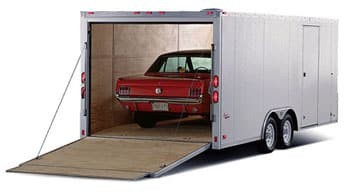Are you wondering about the expenses involved in shipping your car? You’re definitely not alone! Understanding how much to ship a car costs is a common concern for individuals relocating, buying a vehicle from out of state, or sending a car for seasonal purposes. Car shipping costs aren’t fixed; they fluctuate based on a variety of factors. This guide breaks down everything you need to know about car shipping prices to help you plan your budget effectively and make informed decisions.
Factors That Affect the Cost of Shipping a Car
Several key elements come into play when determining the final price to ship your vehicle. From the type of vehicle you have to where it’s going and the time of year, each factor can influence the overall cost. Let’s delve into the details:
Distance: Where are you shipping from and to?
The distance your car needs to travel is arguably the most significant factor influencing shipping costs. Car shipping companies typically calculate prices on a per-mile basis. Interestingly, the cost per mile tends to decrease as the shipping distance increases. Shorter hauls will have a higher per-mile rate, while longer journeys, although more expensive overall, offer a lower cost per mile. This is due to fixed costs like dispatch and logistics being spread across longer distances.
Vehicle Type: What are you shipping?
The type of vehicle you’re shipping is almost as crucial as the distance. Auto transport companies need precise details about your vehicle to allocate appropriate space on the carrier. Larger vehicles, like SUVs and trucks, generally cost more to ship than smaller cars. This is primarily because they occupy more space and sometimes weigh more, impacting fuel consumption and the number of vehicles that can be transported at once. For standard cars, dimensions are usually readily available. However, for vans, pickup trucks, or any vehicle larger than average or with modifications, providing accurate dimensions is essential for an accurate quote.
Maneuverability: Does your vehicle run?
The operational condition of your vehicle significantly impacts shipping costs. A running vehicle that can be driven onto and off the transport carrier is the easiest and most cost-effective to ship. However, if your car is non-operational but can still roll, brake, and steer, it can still be shipped using a winch to load and unload it. Not all carriers are equipped with winches, and those that are often charge a premium for the additional labor and specialized equipment required.
It’s crucial to be upfront about your vehicle’s condition when booking. Failing to disclose that your vehicle is non-running can lead to complications. The carrier might dispatch a truck unsuitable for loading a non-operational vehicle, potentially resulting in “dry run fees” which you would be responsible for. Accurate representation of your vehicle’s condition is key to a smooth and accurately priced shipping process.
 Enclosed Car Shipping Services
Enclosed Car Shipping Services
Transport Type: How do you want your vehicle shipped?
The method of transport you choose greatly affects the shipping cost. Open transport is the most common and economical option. This method involves shipping your car on an open carrier, similar to those you often see transporting vehicles to dealerships. Enclosed transport, on the other hand, provides more protection from the elements and road debris, but comes at a higher cost – often significantly more. Enclosed transport is typically preferred for luxury, classic, or high-value vehicles. The choice between open and enclosed transport depends on your budget and the level of protection your vehicle requires. Additionally, if you are shipping a modified vehicle with non-standard dimensions, it might also influence the price due to potential logistical adjustments.
Origination: Are you shipping from a major city?
The location of your pickup and delivery points plays a role in pricing. Shipping to or from major metropolitan areas is generally more cost-effective than rural locations. Major cities tend to have higher concentrations of car carriers and more frequent routes due to greater demand. This increased carrier availability and route efficiency can lead to more competitive pricing. Rural areas, especially those far from major highways, may incur higher costs because carriers might need to deviate from their standard routes, leading to increased fuel consumption and time. If you are shipping from a rural location, proximity to a major highway can positively impact your shipping rate.
Seasonality: What season is it?
Believe it or not, the time of year can influence car shipping costs. Fall and spring are generally considered stable seasons for car shipping. However, summer and winter can bring more volatility to pricing. Summer often sees a surge in demand for car shipping services, particularly along popular routes, leading to increased prices. This peak demand is often driven by summer moves and seasonal travel. Conversely, winter months can sometimes see a decrease in demand, potentially leading to slightly lower prices. However, winter weather conditions can also cause delays and impact routes, which can sometimes offset potential cost savings.
Other factors that affect automobile shipping costs:
- Vehicle Condition: As mentioned earlier, non-running vehicles typically incur higher shipping costs.
- Expedited Shipping: If you require faster delivery, expedited shipping services are available but will add to the overall cost, typically ranging from $250 to $550 extra.
- Additional Insurance: While basic insurance is usually included, opting for extra insurance coverage will increase the shipping cost.
- Route Efficiency: Direct routes are generally cheaper. Traffic congestion, road closures, and detours can potentially influence pricing.
- Number of Vehicles: Shipping multiple vehicles will naturally cost more in total, although some companies might offer discounts for multiple car shipments.
- Peak Season Surcharges: Summer is generally the peak car shipping season. Expect to pay $200-$350 more during these months compared to the off-season. Winter, while potentially cheaper, might experience delays due to weather.
- Failed Delivery Attempts: If you miss the agreed-upon delivery window and the delivery fails, you will likely incur hefty surcharges, potentially amounting to several hundred dollars.
Average Car Shipping Costs Per Transport Type
In the car shipping industry, the primary transport methods are open transport, enclosed transport, and flatbed transport. Each offers different levels of protection and cost.
Open Transport: This is the most common and economical way to ship a car. Your vehicle is transported on an open trailer, exposed to the elements. It’s suitable for most standard vehicles and everyday cars.
Enclosed Transport: Enclosed transport offers premium protection. Your car is shipped in a fully enclosed trailer, shielding it from weather, road debris, and potential damage. This option is ideal for classic, luxury, exotic, or vehicles with high value. Enclosed transport can cost $400-$500 more than open transport for the same route and vehicle.
Flatbed Transport: Flatbed transport is a specialized service typically used for oversized or very heavy vehicles that cannot fit on standard open or enclosed trailers. It’s also used for vehicles with extreme modifications that exceed standard trailer dimensions.
For the vast majority of car owners shipping standard vehicles, open transport is the preferred choice due to its cost-effectiveness. Enclosed transport remains a niche option for those prioritizing maximum protection for high-value vehicles. While open carriers load vehicles by driving them on and off, many enclosed trailers use liftgate elevators, further minimizing handling and potential damage for sensitive vehicles.
Average Car Shipping Costs Per Distance Traveled
The longer the distance, the more fuel and time are required for transport, directly impacting the cost of car shipping. The table below provides estimated average car shipping costs for open and enclosed transport across various distances. These are averages and can fluctuate based on the factors discussed previously.
| Average cost | Open transport | Enclosed transport |
|---|---|---|
| 150 miles | $470 | $590 |
| 550 miles | $750 | $950 |
| 1,000 miles | $1,150 | $1,400 |
| 1,050 miles | $985 | $1,250 |
| 2,750 miles | $1,300 | $1,550 |
Please note: These are average estimates and are subject to change. Real-time pricing can vary.
Generally, as you can see, longer distances do not proportionally increase the cost due to the per-mile rate decreasing over longer hauls.
Average Car Shipping Cost Based On Vehicle Size
Larger vehicles are generally more expensive to ship because they occupy more space on the carrier and can impact fuel efficiency. As a rule of thumb, moving up a vehicle size category can add approximately $100 to the shipping cost.
| Vehicle Type | Average Weight (pounds) | Estimated Cost per 1,000 miles |
|---|---|---|
| Minivan | 4500 | $0.96 |
| Midsize SUV | 4300 | $0.86 |
| Mid-sized Pickup Truck | 4300 | $0.86 |
| Mid-sized car | 3500 | $0.75 |
| Compact car | 3000 | $0.59 |
The following tables provide a more detailed breakdown of average open and enclosed transport costs based on vehicle type and distance:
Average Open Transport Costs:
| Distance (miles) | Truck | SUV | Car |
|---|---|---|---|
| 150 miles | $400 | $380 | $350 |
| 550 miles | $650 | $580 | $540 |
| 1,000 miles | $1,070 | $920 | $850 |
| 1,100 miles | $900 | $770 | $750 |
| 2,750 miles | $1,200 | $1,100 | $1,050 |
Average Enclosed Transport Costs:
| Distance (miles) | SUV | Truck |
|---|---|---|
| 150 miles | $490 | $600 |
| 550 miles | $780 | $940 |
| 1,000 miles | $1,250 | $1,490 |
| 1,050 miles | $990 | $1,280 |
| 2,750 miles | $1,370 | $1,620 |
These tables illustrate how vehicle size and transport type interact to influence car shipping costs across different distances. Also, keep in mind that factors like in-state vs. cross-country shipping, remote pickup/delivery locations, and fuel surcharges can also play a role in the final price. Cross-country shipping generally averages around $1,300, while shorter in-state trips (under 150 miles) can average around $500.
Average Car Shipping Costs By Freight
While trucks are the most common method for car transport, alternative freight options exist, including airplanes, trains, and ships.
Air Freight: Air freight is the fastest but also the most expensive option. International car shipping via air can cost upwards of $10,000, and even domestic air shipping (e.g., to Hawaii or Alaska) is significantly pricier than truck transport. Air freight is typically reserved for extremely time-sensitive or high-value vehicle shipments.
Train Transport: Shipping a car by train is a more economical alternative, generally costing around $1,000 or less, depending on the route and railway company. It’s a practical and potentially more environmentally friendly option, especially with fluctuating fuel prices.
Ship Transport: Shipping by sea is common for international destinations, particularly to islands like Hawaii or Alaska. Costs can range from $1,000 to $5,000 depending on the distance and destination. Sea freight is a viable option for overseas relocation or shipping to island locations.
Disclaimer: The price ranges provided are estimates and indicators of typical car shipping costs. Fluctuations in fuel prices, seasonal demand, and other market conditions can affect actual pricing. For a precise quote tailored to your specific needs, use an online auto transport calculator.
Ship Your Car with Confidence
Understanding the factors that influence how much to ship a car empowers you to budget effectively and choose the right shipping options. While average costs provide a helpful guideline, the best way to determine your exact car shipping cost is to get a personalized quote. American Auto Shipping utilizes a real-time online auto transport rate calculator, analyzing over 500 data points to provide you with the most competitive and accurate quotes available. Whether you’re shipping a car across the country or just a few states away, get a free, no-obligation quote online today or call us at 800-930-7417 to discuss your car shipping needs with a representative.
